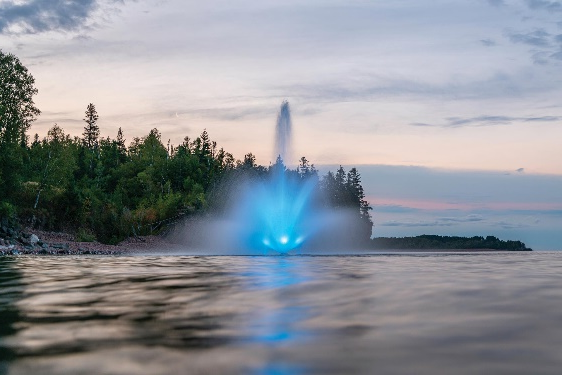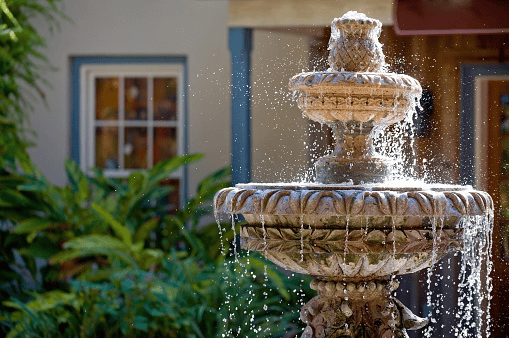Keeping your garden hydrated is essential for keeping the plants healthy. Without enough water, many plants will wilt and lose their leaves, sometimes permanently. Keeping your plants hydrated also helps them grow faster and stronger. Most importantly, a well-hydrated plant is less susceptible to disease and pests. Water features like fountains, streams, or ponds are beautiful additions to any outdoor space. However, they can be challenging to keep in tip-top condition. Luckily, a variety of water fountain pumps make it easier than ever to keep your water feature functioning at its peak! In this blog post we’ll cover everything you need to know about water fountain pumps – what they are, why you need them, the different types available and our top recommendations for each type.
What is a Water Fountain Pump?
A water fountain pump is a device that creates a water flow from a water source (like a pond, pool of water, or water barrel) and pushes the water through a hose or piping and into a water feature. For pond fountains there are basically two kinds of fountain pumps used.
Pond Pump with Impeller
For large ponds, for example, one-tenth of an acre or larger, a display, or decorative fountain, uses a pump with an impeller and a nozzle to create the display pattern. Impellers use vanes to draw in water and create forward motion.
The impeller of the pump creates pressure. However, for most pond fountains, not much pressure is needed. Irrigation pumps for deep wells might have to push water up hundreds of feet, but most display fountains only have a display of five to 25-feet in height. A great deal of pressure is rarely needed. For very large fountains, really huge displays also combine the force of air compressors.


Pond Pump with Propeller
Aerating fountain pumps aerate more than display fountains do. Instead of a pump impeller, this kind of fountain pump uses a propeller. Prop blades push fluid away. Whereas impellers create pressure, propellers create water propulsion. Usually there is no nozzle, thus allowing higher volumes of water to enter the air. But aerating fountains are limited to the V-pattern.


Small Fountains
A water fountain pump can also be used with a water barrel, a concrete, stone, or resin backyard or courtyard fountain, or a small backyard pond. In small backyard ponds, usually a waterfall or a fountain nozzle is the water feature. For ponds with fish, it is important to circulate the water once an hour. In other words, for a 1200-gallon pond, it is important to use a pump that will circulate the water 1200 gallons per hour. If you are using a fountain nozzle, make sure you choose one that will NOT create a display that is wider than your pond. Keep wind in mind if you live in a windy area. If you are using the pump for a fountain, it is very helpful if you can find out how many gallons of an hour pump will make your fountain display look best..
How to Choose a Water Fountain Pump
When it comes to choosing the right water fountain pump, there are a few key factors to keep in mind. This will help you select the best water fountain pump for your needs. Let’s take a look at the most important factors to consider when buying a water fountain pump. – Size – The pump size is the first issue you’ll want to consider. You’ll want to make sure the pump you choose can adequately support the water feature you’re working with. If you are using the pump in an already-made fountain, make sure it fits dimensionally into your fountain’s basin. Some small pump for fountains operate on electricity; others are operated by batteries (that must be replaced or recharged); and some pumps are solar. Keep in mind that solar pumps will shut off in the sun’s absence unless they also have a battery pack. Battery pack quality varies a great deal. -Noise-To ensure quiet operation of a pump in a fountain, sometimes you need to cushion the pump in the basin, as vibration tends to be what causes the most noise.

Conclusion
Keeping your garden hydrated is essential for keeping plants healthy. Without enough water, many plants will wilt and lose their leaves, sometimes permanently. Keeping your plants hydrated also helps them grow faster and stronger. Most importantly, a well-hydrated plant is less susceptible to disease and pests. Water features like fountains, streams, or ponds are beautiful additions to any outdoor space. However, they can be challenging to keep in tip-top condition. Luckily, a variety of water fountain pumps make it easier than ever to keep your water feature functioning at its peak! In this blog post we’ve covered everything you need to know about water fountain pumps – what they are, why you need them, the different types available and our top recommendations for each type.


